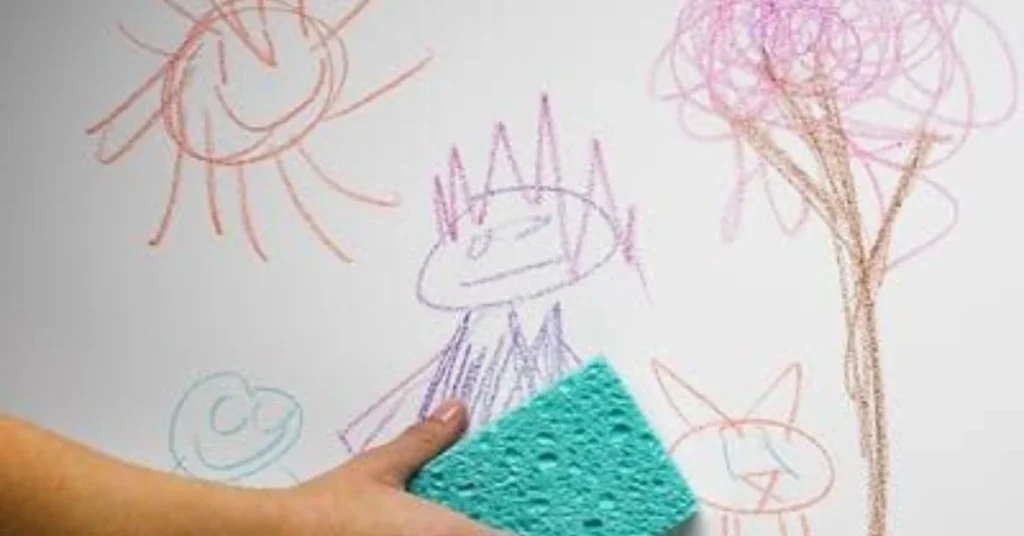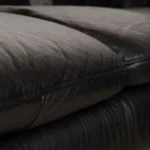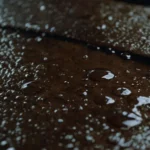To avoid scratching the paintwork, always use soft sponges or cloths while cleaning. Start with warm, soapy water and the mildest cleaning detergent, applying it with a soft sponge to gently clean the surface. How to clean walls properly? Be careful not to over soak the sponge, as excess liquid can cause water stains to be left behind, affecting the walls.
For a natural cleaning solution, mix equal parts of white vinegar and water. The acidity in vinegar helps break down dirt and grime without damaging paint. It’s especially beneficial for removing grease, light stains, and even acrylic paint from glass.
How to Clean Painted Walls
How to Clean Painted Walls without damaging the surface starts with understanding what your walls face daily—pencil, pen, lipstick, marker, coffee, crayon, and even the occasional soccer ball. Regular wall cleaning helps maintain their appearance and extend the life of your interior paint.
Using high-quality latex paint makes cleaning easy, as it resists stains, spills, and scuffs. A durable finish ensures the paint washes clean without losing color or sheen integrity. Learning to clean painted walls properly helps keep your home looking fresh for years.
For best results, always use gentle cleaning methods that won’t harm the durability of your walls. A mild cleaner and a soft sponge can tackle every day wear and tear while keeping the color and finish intact.
The Right Cleaning Routine for Walls
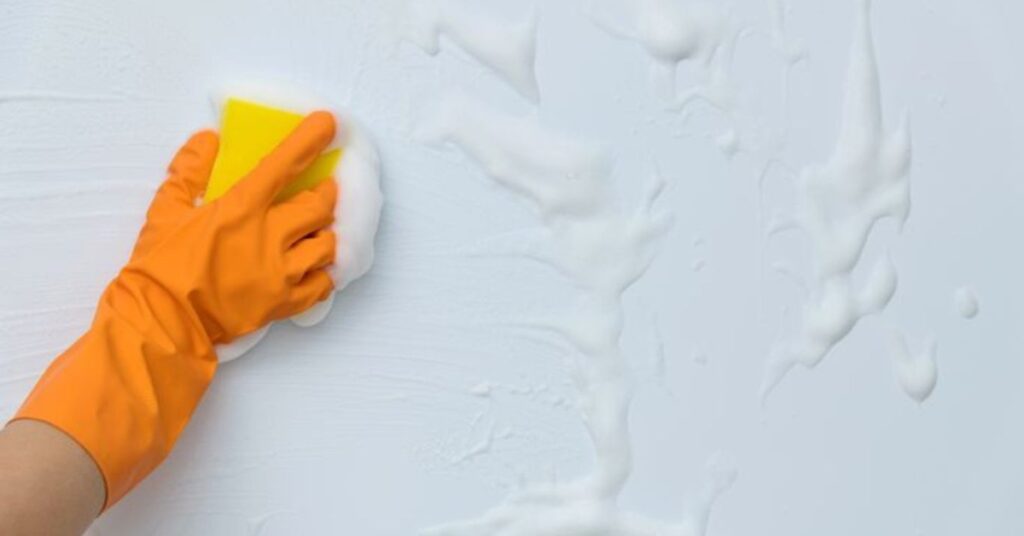
Ideally, give newly painted walls at least two weeks to cure before dusting or cleaning them. If spills or stains occur sooner, wait four to six hours before using the right cleaning tips to safely clean the surface.
Supplies Checklist: Cleaning Painted Walls
Rubber gloves
Soft, dry towels or rags
Vacuum cleaner with brush attachment
Two buckets
Two non-abrasive sponges or microfiber cloths
Warm water
Mild dish soap
All-purpose cleaner for tough stains
Step#1 Know Your Wall’s Paint Type for Safe Cleaning
Understanding your wall’s finish helps you determine how much you can scrub without damaging the paint. Higher gloss or sheen surfaces are easier to clean, while lower sheens like flat, matte, and eggshell need a gentler touch to avoid wear.
Step#2 Things to Do Before Cleaning Walls
Before cleaning your walls, gather all essentials to complete the task. Fill one bucket with a washing solution and another with clean water to rinse the surfaces. Lay towels or rags along the floors and baseboards to catch any excess dirt, dust, or water.
Step#3 Use Water First to Clean Your Walls
Start with water, one of the best cleaning agents, to freshen up your space. Before you wash, dust the surface using a brush attachment on a vacuum to remove dirt. For lighter stains and scuffs, gently rub a large, non-abrasive sponge dampened with warm water—a simple step in how to clean walls effectively.
Step#4 Use a Light Soap Solution for Walls
If warm water alone doesn’t remove marks, scuffs, and stains, mix it with a mild dish detergent for better results. Wear rubber gloves to protect your hands and start washing from the bottom, working your way up to prevent streaks from forming.
Clean in small sections, using a gentle circular motion to avoid damaging the paint. As you go, rinse the sponge in your rinse bucket to keep the surface fresh and free of residue.
Step#5 Make Sure Walls Are Fully Dry
After you clean the walls, make sure to dry them properly to prevent any moisture damage or mildew buildup. Use a soft, absorbent cloth and gently wipe the surface to keep it fresh.
Most Effective DIY Cleaners for Tackling Dirty Walls
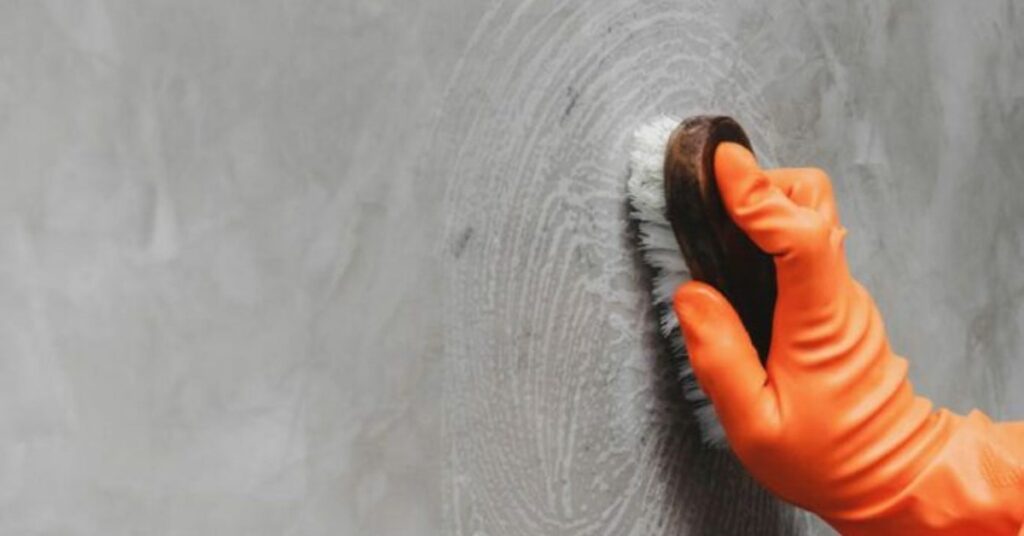
- Vinegar Wash
Create a natural cleaning solution by mixing equal parts of white vinegar and water. Its acidity helps break down dirt, grime, and grease without damaging paint, making it beneficial for removing light stains and even acrylic paint from glass.
- Baking Soda Paste
Mix 1/4 cup of baking soda with 1 tablespoon of water to create a gentle abrasive paste that works excellent on painted walls. It’s a great way to tackle stubborn stains without causing damage.
Apply the paste to the stained area and scrub lightly with a soft brush or sponge. The mild abrasive properties of baking soda effectively lift stains while keeping the wall’s surface intact.
- Dish Soap Solution
Simple cleaning solution can be made by mixing 2 cups of warm water with 1 teaspoon of liquid dish soap and distilled white vinegar. This mild cleaner works well on painted walls, helping to effectively remove dirt and light stains without damage.
- Lemon Juice Mixture
A blend of lemon juice and water works as a natural cleaning solution, leaving surfaces refreshing and spotless. The citric acid acts as a degreaser and stain remover, making it highly effective for tackling grease spots and sticky residue on walls.
Test any homemade solution on a small area first to ensure it doesn’t damage the paint. Use soft cloths or sponges to prevent scratching the surface and avoid over-wetting, especially on flat or matte finishes. Always rinse with a damp cloth and dry thoroughly for a clean, chemical-free living space.
Removing Oil Stains From Painted Walls
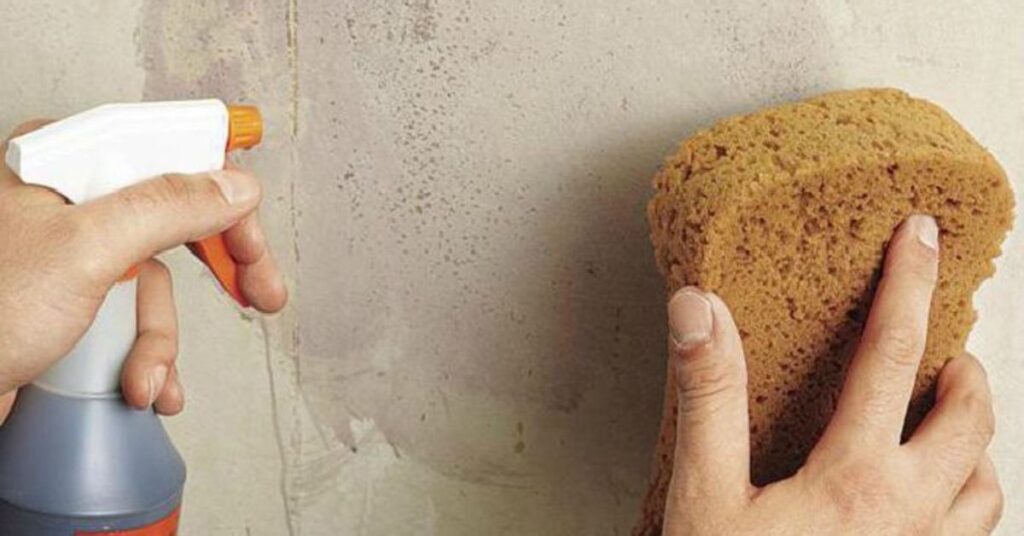
Gently remove excess stain with a cloth placed directly beneath to stop it from running down. Work carefully from the outside in, lifting the stain off the surface instead of letting it spread. Choose a cleaning solution suited for the stain type and paint finish to tackle the mess effectively.
- It’s always worth trying a simple mix of soap and water first, as it’s often enough to lift stains without extra effort.
- For greasy marks, mix one part of distilled white vinegar with four parts of warm water and apply gently. Its acidic nature makes it ideal for glossy, durable finishes. This solution is also handy for removing finger marks from wallpaper without damage.
- To lift stains from pen marks, use a sponge eraser, but apply minimal pressure as it’s abrasive and best suited for durable surfaces.
- For grease-based stains, a bicarbonate of soda paste can be a real rescue. Just mix a tablespoon of bicarb with a splash of water until it forms a thick, gloopy consistency. Apply directly to the stain, lightly rubbing it in, then wipe it off with a damp cloth once the stain is gone. This method is highly effective in breaking down tough marks.
FAQ
What is the Best Thing to Wash Walls With?
For painted walls, begin with a mild washing-up liquid mixed with warm water, as the right paint type and finish determine the best approach. If the paint is durable, using bicarbonate of soda, a magic eraser, or distilled white vinegar can be handy for spot cleaning and tackling tough marks.
Can you wash walls with washing-up liquid?
Using a mild washing-up liquid with a soft sponge is safe, but always test a small area first. This is important, especially when using abrasive cleaners. Latex-based paint, particularly those with a matt or satin finish, can be fragile, unlike oil-based paint with a high-gloss finish, so it’s worth keeping in mind.
How do you clean wallpaper?
Before you clean your wallpaper, check if it’s washable or non-washable. If washable, start by dusting, then apply soapy water, making sure to wring out the sponge to avoid excess moisture.
Gently rinse the surface with a fresh sponge and allow it to dry completely. For non-washable wallpaper, stick to dusting to prevent damage and maintain its look.
How do you clean walls without leaving marks?
Use the right cleaning solution and a proper technique by working top to bottom in small sections to avoid streaking. Wring out the sponge firmly between applications, and always wipe with a dry cloth instead of scrubbing to prevent removing paint or leaving walls saturated.

